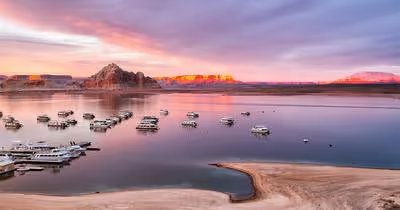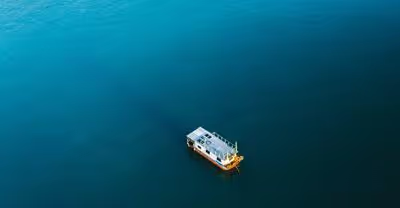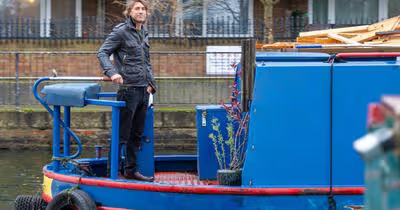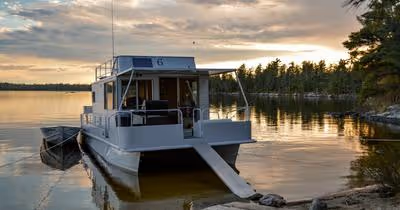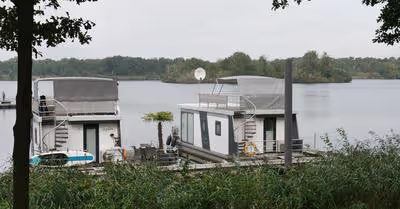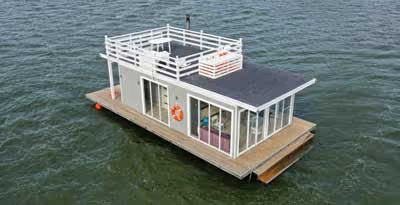
Many sailors have given thought to grow some plants on board owing to the need to become self-sufficient in the sea environment.
In addition to being aesthetically pleasing, plants may purify the air surrounding you. In the isolation of the sea, greenery can bring you serenity. But traveling in a boat covered in vegetation seems like a utopian dream. Certainly, keeping plants alive in a boat is challenging.
You can grow plants on a boat, but maintaining them may be difficult for a newbie. In the beginning, it could turn into a messy disaster with toppled pots. Your plants may also wither away in the hostile sea environment. Thus, some of your initial attempts may kill your green passengers.
You must first be aware of the optimal conditions for the plants you wish to grow aboard your yacht. If you just try to protect them from the harsh sea conditions, it's possible to get a few fresh herbs within an arm's reach.
In order to learn more about the tips for cultivating fresh herbs, flowers, and veggies on a boat, we approached sailors who've become proficient gardeners now. Read more to find out what they told us.
Growing Plants on a Boat: Benefits and Challenges
It takes some initial trial and error to grow plants on a boat. Slowly, you'll be able to decide for yourself what will and won't survive in your boat. Your persistence will bear fruit in a few months, and you'll soon be boasting about your boat garden.
Benefits
Having your own floating garden brings you many benefits.
Fresh Herbs
With a small garden on board, you won't have to limit yourself to using basil and cilantro that you buy on shore to season your pasta. Even when you're away from the coast, you can still consume meals with some fresh flavors. Fresh leaves of spinach can make your salad crunchy.
Health Benefits
The sailors may benefit from some fresh greens that are high in calcium and vitamin C while also warding off some illnesses.
For example, seafarers who had to go on long sea trips without access to fresh vegetables have long been plagued by scurvy, an illness caused by a lack of vitamin C. After a while, even the greens kept in refrigerators were no longer edible.
By maintaining your own garden in the boat, you can fight against such diseases. A lot of herbs also have anti-inflammatory properties that are beneficial to health. Aloe Vera can be used for treating insect bites and sunburns.
Aesthetics
In addition to making your food taste better, plants bring peace, clean the surrounding air, and have a lovely appearance. Imagine lush green leaves in the middle of all the blues. It seems pleasing, right?
Challenges
Surviving in the sea comes with many challenges for plants as well.
Sea Water
If your plants are frequently exposed to sea spray, the salt will build up over time to a level that is fatal to them. Therefore, it is preferable to frequently spray them with fresh water to help them revive. The seedlings especially need to be protected from seawater as much as possible.
Improper Sunlight
In the open sea, the sun is either too intense or, in some polar zones, too faint. Place the shade-loving plants in the cockpit or cabin to protect them from direct sunlight. Plants like aloe, oregano, chives, and mint can grow in shade easily.
Rough Motions
Jarring motions of the boat will cause plant pots to tumble over and leave a mess everywhere. To prevent pots from falling, you can:
- Use rectangular planters with low centers of gravity.
- Arrange the plants in wooden crates and place them somewhere secure.
- Encourage your plants for lower and wider growth patterns since tall plants can't remain upright in a boat.
Less Space
There isn't much room on boats for a lot of plants. To expand your variety and make the most of the space, you might select plants that can share a pot. For example, it is possible to grow mint, coriander, and lemon balm together. Thyme, oregano, and rosemary can all be planted in the same pot with holes because they all require well-drained soil.
Common plants for boat gardening
- Herbs like basil, oregano, cilantro, and mint are the fastest to grow.
- You can grow a wide range of succulents, especially aloe vera.
- Greens like spinach can be grown anytime with very little maintenance.
- Some boaters have tomato plants too, but they are sensitive to the sea environment and take a long time to produce fruit.
- Moreover, Chinese cabbage, kale, chives, and amaranth can easily be grown through a hydroponic system.
Some Pro Tips for Growing Plants Aboard
Use Natural Fertilizers
Use organic fertilizers like coffee grounds, eggshells, and vegetable peels to fertilize your boat plants. It will prevent the addition of chemicals to the foodstuff.
Watering
Water makers can be used to remove salt from seawater. This method is safe but costly, especially if you have a large garden. Remember to test the pH of desalinated water before giving it to your plants. To neutralize the acidity, you might need to add a small amount of white vinegar. You can also collect rainwater to water your plants.
Soil
If you can't purchase soil because there's no store nearby, ask locals for rich soil from their gardens. Freeze the soil for a few days to kill any insects.
The other alternative to soil is hydroponic culturing, which uses only water and some nutrients.
Miscellaneous
- Start with inexpensive seeds from your local grocery store for experimenting. Sprout seeds in disposable trays and pot them once they've germinated.
- Use aluminum foil to wrap the pot. It will lock the moisture in the roots and prevent the soil from creating a mess.
- Fill holes with disposable fiber or use pots without holes to avoid muddy water everywhere.
- Use heavy-duty Velcro or a bungee rope to secure your pots in place. You may place them on non-skid mats, which will prevent the pots from slipping.
A DIY Planter for Boats
Here's how you can create a plastic bottle hanging garden in your boat.
Materials
old shoe racks, nuts, bolts, plant hangers, pots or cut plastic bottles.
Steps
- Grow your plants in cut plastic bottles or plastic pots.
- Hang them from the frame of the old shoe rack.
- Secure the hangers with nuts and bolts.
- Your planter is all ready. Place it on the deck with the open side facing inwards. The rack will save the plants from sea spray.
Can You Grow Plants on a Boat Enough for Self-sustenance?
It depends on the size and type of the boat you have. Small private boats don't have enough room to grow crops or vegetables. Large catamarans, more than 400 ft in size, have a large space to grow fruits and vegetables enough for self-sustenance.
But, to manage such a large-scale garden, you'll need more people with you. More people means more food to be grown. Therefore, practically speaking, it is impossible to grow a garden as a sole source of food, at least in this lifetime.
Do immigration regulations allow plants?
Since not all countries allow foreign plants to enter their lands, it is advisable to check the rules beforehand. For example, officials in the Caribbean and the Eastern Pacific regions don't impose any restrictions, while countries like New Zealand and Australia will seize and quarantine green passengers.
Even in the US, certain plants in commercial shipments are subjected to domestic quarantine during movement from one state to another. One of these plants is a citrus tree. However, the USDA doesn't regulate the interstate movement of nursery plants brought by travelers.



